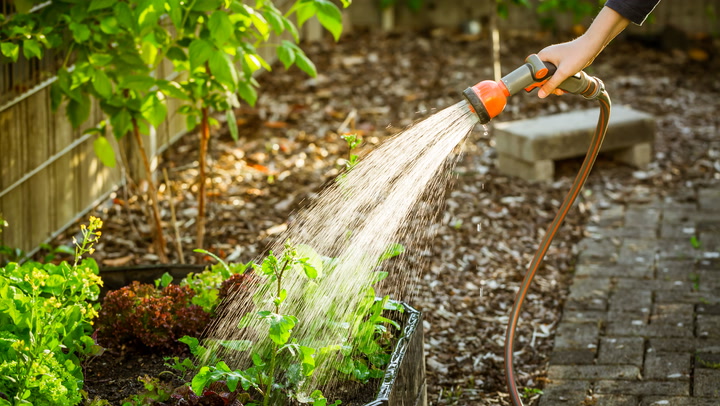Water conservation is essential for sustainable gardening, especially in areas prone to drought. Implementing water-saving techniques in your garden can help preserve this vital resource while keeping your plants healthy and thriving. This article provides practical tips and strategies to help you save water in your garden effectively.

The Importance of Water Conservation in Gardening
- Environmental Impact: Reducing water usage helps protect local ecosystems and conserves natural resources.
- Cost Savings: Lower water bills by minimizing waste and utilizing efficient irrigation methods.
- Sustainability: Promotes long-term sustainability of your garden, even in times of water scarcity.
Planning and Designing a Water-Efficient Garden
- Choosing Drought-Tolerant Plants
- Native Plants: Select native species that are adapted to your local climate and require less water.
- Xeriscaping: Implement xeriscaping principles by using plants that thrive in dry conditions.
- Grouping Plants: Group plants with similar water needs together to optimize watering efficiency.
- Soil Improvement
- Soil Testing: Test your soil to determine its composition and drainage capabilities.
- Amendments: Add organic matter, such as compost, to improve soil structure and water retention.
- Mulching: Apply mulch to the soil surface to reduce evaporation and maintain moisture levels.
- Efficient Garden Layout
- Hydrozones: Create hydrozones by grouping plants with similar water requirements.
- Windbreaks: Use windbreaks, such as hedges or fences, to reduce wind evaporation.
- Shade: Incorporate shaded areas to reduce water loss through evaporation.
Efficient Watering Techniques
- Drip Irrigation Systems
- Installation: Set up a drip irrigation system to deliver water directly to the root zones of plants.
- Benefits: Minimizes water waste, reduces evaporation, and promotes healthy root growth.
- Maintenance: Regularly check for clogs and leaks to ensure efficient operation.
- Soaker Hoses
- Placement: Lay soaker hoses along plant rows or around garden beds to provide consistent moisture.
- Timing: Water early in the morning or late in the evening to reduce evaporation.
- Coverage: Ensure even water distribution by overlapping hoses and adjusting water pressure.
- Rainwater Harvesting
- Rain Barrels: Install rain barrels to collect and store rainwater for garden use.
- Downspouts: Connect downspouts to rain barrels to capture roof runoff.
- Usage: Use collected rainwater to irrigate plants, especially during dry periods.
- Watering Techniques
- Deep Watering: Water deeply and infrequently to encourage deep root growth.
- Avoid Overwatering: Monitor soil moisture levels and adjust watering schedules accordingly.
- Hand Watering: Use a watering can or hose with a spray nozzle for targeted watering.
Mulching and Ground Covers
- Types of Mulch
- Organic Mulch: Use organic materials such as wood chips, straw, or leaves to retain soil moisture.
- Inorganic Mulch: Consider inorganic options like gravel or stones for low-maintenance areas.
- Living Mulch: Plant ground covers like clover or creeping thyme to protect soil and reduce evaporation.
- Benefits of Mulching
- Moisture Retention: Mulch helps retain soil moisture by reducing evaporation.
- Weed Control: Suppresses weed growth, which competes for water and nutrients.
- Soil Health: Improves soil structure and fertility as organic mulch decomposes.
- Application Techniques
- Thickness: Apply a 2-4 inch layer of mulch to provide adequate coverage and insulation.
- Replenishing: Refresh mulch periodically to maintain its effectiveness.
- Avoiding Stem Contact: Keep mulch away from plant stems to prevent rot and pest issues.
Smart Watering Practices
- Watering Schedule
- Early Morning: Watering in the early morning reduces evaporation and allows plants to absorb moisture before the heat of the day.
- Evening Watering: Watering in the evening can also be effective, but avoid overwatering to prevent fungal diseases.
- Weather Monitoring: Adjust your watering schedule based on weather conditions and rainfall.
- Using Water-Saving Devices
- Soil Moisture Sensors: Install sensors to monitor soil moisture levels and adjust irrigation accordingly.
- Rain Sensors: Use rain sensors to automatically turn off irrigation systems during rainfall.
- Smart Controllers: Invest in smart irrigation controllers that optimize watering schedules based on weather data and soil conditions.
- Reducing Lawn Water Usage
- Drought-Resistant Grass: Choose drought-resistant grass varieties for your lawn.
- Lawn Alternatives: Consider replacing lawn areas with ground covers, native plants, or hardscaping.
- Mowing Practices: Keep grass longer during dry periods to reduce water evaporation.
Water Recycling and Reuse
- Greywater Systems
- Installation: Set up a greywater system to reuse water from sinks, showers, and laundry for irrigation.
- Safety: Use biodegradable and environmentally friendly products to avoid contaminating your garden.
- Distribution: Direct greywater to non-edible plants or ornamental areas.
- Reusing Household Water
- Collecting Runoff: Capture and reuse water runoff from air conditioning units or dehumidifiers.
- Reusing Cooking Water: Use cooled cooking water to irrigate plants instead of pouring it down the drain.
- Dishwater: Collect dishwater (without harmful chemicals) for watering garden beds and shrubs.

Conclusion
By implementing these water-saving techniques and strategies, you can create a more sustainable and efficient garden. Not only will you conserve water and reduce your environmental impact, but you’ll also enjoy a healthier and more resilient garden that thrives even during dry periods. Start making small changes today to ensure a greener tomorrow.


